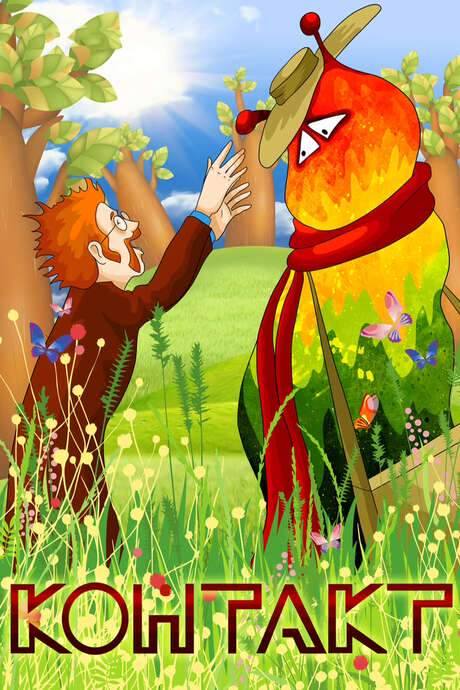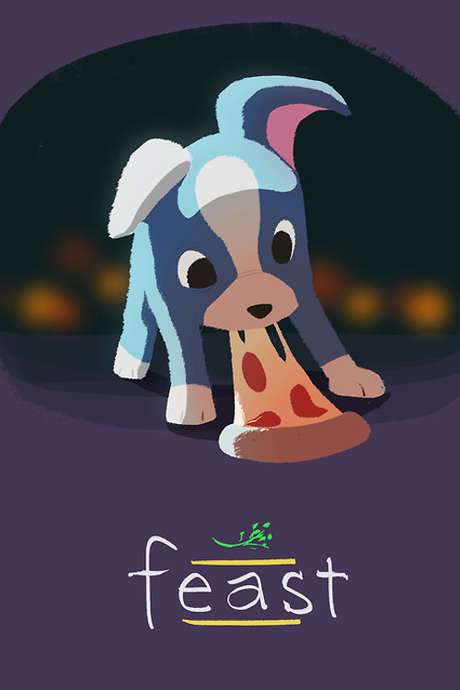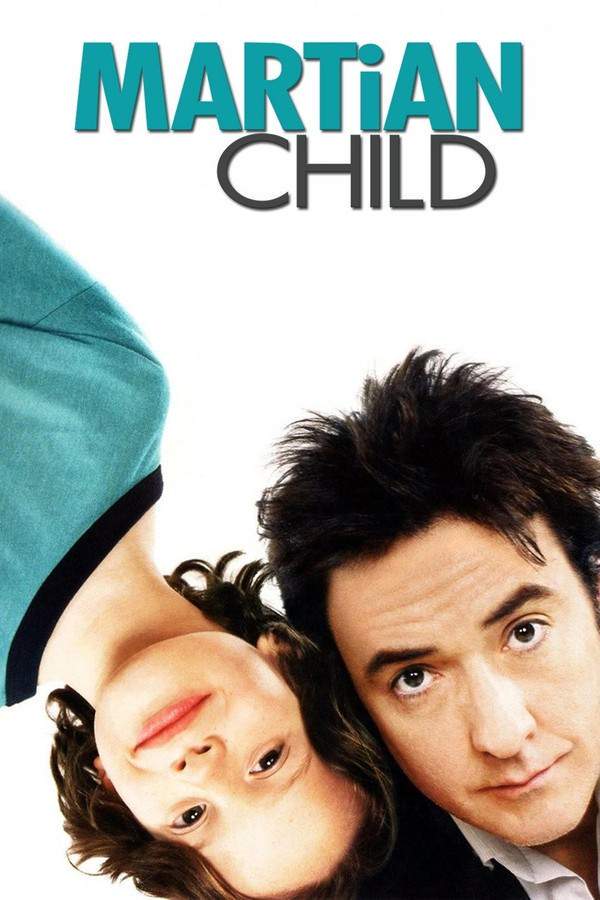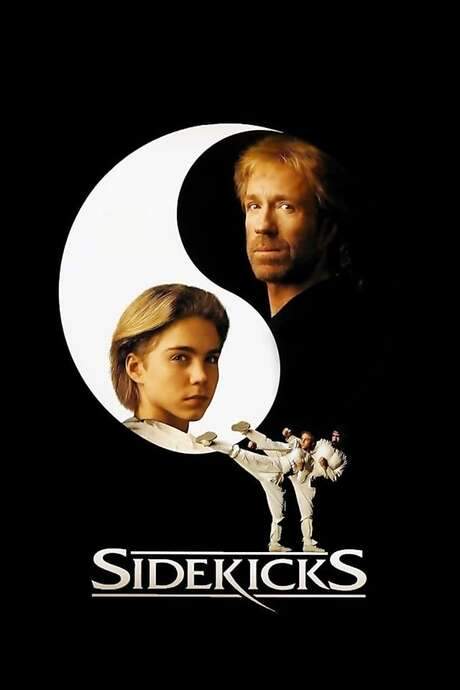
Stand by Me Doraemon
Year: 2014
Runtime: 94 mins
Language: Japanese
Directors: Takashi Yamazaki, Ryuichi Yagi
Doraemon and Sewashi travel back in time and encounter a young Nobita. A crucial condition arises: Doraemon must guide and assist Nobita, or risk being unable to return to their own time. This unexpected journey tests their friendship and challenges them to ensure Nobita's future unfolds as it should.
Warning: spoilers below!
Haven’t seen Stand by Me Doraemon yet? This summary contains major spoilers. Bookmark the page, watch the movie, and come back for the full breakdown. If you're ready, scroll on and relive the story!
Stand by Me Doraemon (2014) – Full Plot Summary & Ending Explained
Read the complete plot breakdown of Stand by Me Doraemon (2014), including all key story events, major twists, and the ending explained in detail. Discover what really happened—and what it all means.
Nobita Nobi [Megumi Oohara] is a fourth grader who consistently struggles in his classes, earning failing marks and finding himself the target of bullying from his classmates Suneo Honekawa [Tomokazu Seki] and Takeshi “Gian” Goda. His days feel like a cycle of frustration, until a surprising visitor arrives from the future: Sewashi [Sachi Matsumoto], Nobita’s great-great-grandson from the 22nd century, accompanied by the blue robotic cat Doraemon [Wasabi Mizuta]. Sewashi explains that Nobita’s present-day laziness could doom his future—he would grow up to a life of failed ventures, debt, and personal unhappiness. To spare Nobita from this bleak fate, Sewashi implores Doraemon to stay in the past and help Nobita change his trajectory, twisting Doraemon’s nose to force the decision if Nobita resists.
Doraemon does not come alone; his gadgets, as wonderful as they are, carry a warning. He urges Nobita not to lean too hard on tools from the future, reminding him that true growth often comes from effort and resilience rather than quick fixes. Yet the promise of better odds in life proves hard for Nobita to resist. With Doraemon’s shiny array of devices at hand, Nobita starts experimenting with ways to improve his social life and grades, seeking shortcuts to overcome the daily humiliation he endures and to win the heart of his long-time crush, Shizuka Minamoto [Yumi Kakazu].
Shizuka [Yumi Kakazu] appears as the figure Nobita admires most, a kind and capable classmate who stands out as a bright spot in his world. The longer Nobita leans on Doraemon’s gadgets, the more he discovers how complicated his feelings can be, and how the path to happiness isn’t simply about mastering a test or impressing a crush. Doraemon cautions him again about dependency, but Nobita becomes increasingly determined to prove he can stand on his own two feet, even as Doraemon’s presence remains a crucial lifeline.
Nobita’s efforts to win Shizuka’s attention lead him into awkward, endearing situations. He asks for help with his studies in an attempt to catch up to Dekisugi Hidetoshi [Shihoko Hagino], the ace student who shines academically and seems to draw Shizuka’s notice. Dekisugi is a foil to Nobita’s insecurities, and the dynamic between the three becomes a quiet undercurrent to the central drama: can Nobita secure a future where Shizuka sees him as more than a classmate? In the background, Gian’s mother [Miyako Takeuchi] looms as a reminder of the household pressures surrounding Gian and his circle, while Tamako Nobi [Kotono Mitsuishi], Nobita’s mother, does what she can to keep Nobita’s spirits from breaking under daily disappointments.
As Nobita’s infatuation with Shizuka deepens, a pivotal, somewhat mischievous moment changes the mood. In a misguided attempt to win Shizuka’s affection, Nobita triggers a misunderstanding that involves Shizuka’s reaction to an accidental, embarrassing moment. The incident leaves Shizuka upset and unsettled, but it also plants a seed of doubt in Nobita about the real consequences of his actions. When Shizuka overhears a conversation between Gian and Suneo about Nobita’s fragile self-esteem and recent failures, she worries that Nobita might be contemplating something drastic. The fear for Nobita’s well-being becomes a turning point: Shizuka decides to intervene, resisting a protective potion-like device from Doraemon that would supposedly shield him from social harm—an early sign that their bond is beginning to shift toward something closer and more vulnerable.
From there, a more direct effort to bridge the gap between Nobita and Shizuka unfolds. Doraemon discloses that Shizuka’s eventual marriage to Nobita is part of a future Nobita could reach if he changes his ways. To test his resolve, Nobita imagines a version of himself—an older Nobita [Satoshi Tsumabuki]—and even tries to guide Shizuka through a perilous moment during a blizzard while dressed as his older self. The plan risks drawing Shizuka closer to him, or tearing them apart, but the moment crystallizes a crucial truth: Shizuka would indeed marry Nobita if his future is shaped in the right direction. The realization that Shizuka’s father Yoshio Minamoto [Aruno Tahara] would approve adds a new weight to Nobita’s decisions, strengthening his resolve to change the course of events.
With Nobita determined to earn a future where he and Shizuka can be together, Doraemon and Nobita return to the present and prepare for the long arc ahead. Nobita declares that he will strive to make Shizuka happy, whatever it costs. However, Doraemon’s presence in the timeline remains delicate; Doraemon’s programming ultimately dictates a return to the future within a short window, roughly 48 hours—a tug-of-war between a beloved friend’s duty and a boy’s growth. To prove his independence, Nobita confronts Gian in a tense, emotional clash to show he can defend himself without Doraemon’s gadgets. Gian, seeing Nobita’s resolve and the hurt it has caused him, relents, and Doraemon tearfully escorts Nobita home, leaving behind a calm but poignant understanding that their bond is real and strong.
April Fools’ Day arrives with a shock: Gian tricks Nobita into believing Doraemon has come back to the present. In anger and frustration, Nobita drinks a solution Doraemon had provided, a potion whose effect makes everything the drinker says come out in reverse. The prank sets off a chain reaction—Suneo is chased by a dog, Gian is dragged away by his mother, and Nobita, feeling betrayed, curses the fantasy of Doraemon’s return. Yet the potion’s effects also force a reckoning within Nobita, revealing how far he’s come. In a surprising reversal, Doraemon returns not as a trick but as a welcome guest, having secured permission to stay because Nobita’s faith in him—and his decision to move forward without relying on gadgets—reached the right note. Nobita and Doraemon share a heartfelt embrace, proof that their partnership can endure even when the future is uncertain.
In the end, the story unfolds as a long, hopeful journey rather than a single moment of triumph. Nobita’s future is made brighter through determination, genuine relationships, and the steady support of Doraemon. Shizuka’s warmth and understanding become a beacon for Nobita, reinforcing that love and friendship can motivate real change. The film closes on a note of renewed companionship, with Nobita ready to face the world alongside Doraemon, and with the promise that the path ahead will be built on effort, empathy, and a willingness to grow. This is a tale about the tension between wishful shortcuts and the sturdier, slower work of becoming someone worthy of the future one desires, all told through a blend of humor, warmth, and the timeless charm of Doraemon’s world.
Last Updated: October 03, 2025 at 06:45
Explore Movie Threads
Discover curated groups of movies connected by mood, themes, and story style. Browse collections built around emotion, atmosphere, and narrative focus to easily find films that match what you feel like watching right now.
Movies with Magical Companions like Stand by Me Doraemon
Stories where futuristic beings guide characters through personal growth with warmth.If you enjoyed the heartwarming bond between Nobita and Doraemon, you'll love these movies about characters who find growth and friendship with a magical or futuristic guide. These stories blend gentle sci-fi or fantasy with themes of self-improvement and caring support, creating a similarly hopeful and comforting experience for viewers of all ages.
Narrative Summary
The narrative typically follows a character facing internal challenges like insecurity or loneliness. The arrival of a non-human companion—be it a robot, alien, or magical creature—provides tools, wisdom, and unwavering support. The story unfolds through episodic challenges, focusing on the protagonist's gradual personal growth rather than high-stakes external conflict, culminating in a positive transformation.
Why These Movies?
These movies are grouped by their central theme of a supportive, often technologically advanced, friendship that fosters personal development. They share a low-intensity, hopeful tone where the primary conflict is internal, and the resolution is achieved through kindness, encouragement, and lighthearted adventure.
Gentle Coming-of-Age Movies like Stand by Me Doraemon
Character-driven stories about quiet, everyday challenges of growing up.Fans of Stand by Me Doraemon's focus on Nobita's personal growth will appreciate these gentle coming-of-age films. These movies capture the essence of childhood challenges—like building confidence and navigating school life—with a steady, hopeful pace and a focus on emotional development rather than intense drama, perfect for a comforting watch.
Narrative Summary
The plot is often straightforward, following a linear path of a young protagonist learning to believe in themselves. Conflicts are relatable, such as academic struggles or social anxiety, and are resolved through perseverance and the support of a small group of true friends. The journey is more important than the destination, emphasizing the value of effort and the small victories that define growing up.
Why These Movies?
This grouping is defined by a shared focus on the quiet, introspective side of growing up. The movies prioritize character development over complex plotting, maintain a low-intensity and hopeful mood, and resolve in a way that affirms the protagonist's personal journey, making them deeply comforting and relatable.
Unlock the Full Story of Stand by Me Doraemon
Don't stop at just watching — explore Stand by Me Doraemon in full detail. From the complete plot summary and scene-by-scene timeline to character breakdowns, thematic analysis, and a deep dive into the ending — every page helps you truly understand what Stand by Me Doraemon is all about. Plus, discover what's next after the movie.
Stand by Me Doraemon Timeline
Track the full timeline of Stand by Me Doraemon with every major event arranged chronologically. Perfect for decoding non-linear storytelling, flashbacks, or parallel narratives with a clear scene-by-scene breakdown.

Characters, Settings & Themes in Stand by Me Doraemon
Discover the characters, locations, and core themes that shape Stand by Me Doraemon. Get insights into symbolic elements, setting significance, and deeper narrative meaning — ideal for thematic analysis and movie breakdowns.

Stand by Me Doraemon Spoiler-Free Summary
Get a quick, spoiler-free overview of Stand by Me Doraemon that covers the main plot points and key details without revealing any major twists or spoilers. Perfect for those who want to know what to expect before diving in.

More About Stand by Me Doraemon
Visit What's After the Movie to explore more about Stand by Me Doraemon: box office results, cast and crew info, production details, post-credit scenes, and external links — all in one place for movie fans and researchers.





























